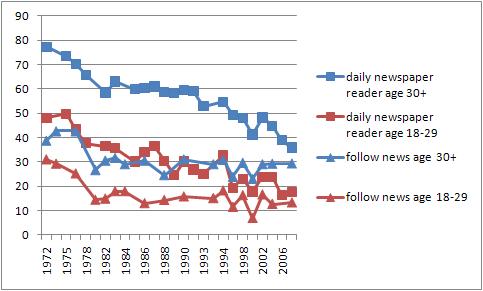During the 2008 presidential primary campaign, the Princeton historian Sean Wilentz was a strong backer of Hillary Clinton and critic of Barack Obama. He launched many debating points. For example, the Obama Campaign allegedly showed “indifference–and at times, even pride” about the fact that white working class voters were opposing Obama in the primary. Wilentz predicted “a Democratic disaster among working-class white voters in November should Obama be the nominee.” Obama was supposedly the anti-political candidate, the heir of goo-goo reformers like Adlai Stevenson and Jimmy Carter, whereas Hilary Clinton, like Franklin Roosevelt, relished partisan combat and understood how to pass legislation. When she insisted on the importance of elected national leaders in the civil rights struggle, she was correct about history, and her critics were just playing the race card by claiming that the movement had achieved its victories at the grassroots.
And now Wilentz gets his chance to say, “I told you so.” His recent New Republic piece is headlined, “Live By the Movement, Die By the Movement: Obama’s doomed theory of politics.” “Clearly,” he writes, “the hopes and dreams that propelled Obama to the White House are in disarray. The social movement politics that some of his most fervent followers ascribed to him–the idea of electing a ‘post-partisan’ president as the leader not of a nation or even of a political party but of a personalized social movement–has failed.” Wilentz names Marshall Ganz as the source of this failed idea.
Of course, Ganz’ diagnosis is the precise opposite. A moral social movement, rooted in Democratic Party cadres and angry about conservative abuses, swept Obama into office over the technocratic Hillary Clinton and the fake populists McCain and Palin. But after Inauguration Day, Obama “chose to demobilize the movement that elected him president. By shifting focus from a public ready to drive change–as in ‘yes we can’–he shifted the focus to himself and attempted to negotiate change from the inside, as in ‘yes I can.'” In other words, there was no progressive social movement when it really counted, and that is why the president couldn’t make more headway on policy. President Obama actually governed the way Wilentz had hoped President Hillary Clinton would govern.
Wilentz writes:
Fundamental to the social movement model is a conception of American political history in which movements, and not presidents, are the true instigators for change. Presidents are merely reactive. They are not the main protagonists. Obama himself endorsed this conception constantly on the campaign trail, and has repeated it often as president, proclaiming that ‘real change comes from the bottom up.’
But this theory was only one theme during the campaign, and a deeply submerged theme in the administration so far. Much more prominent is the idea that Wilentz seems to endorse: Democratic presidents solve our problems by negotiating and implementing smart policies. As I observed months ago, the President’s rhetoric has been subtly shifting from civic empowerment to a focus on his own personal leadership–from “we” to “I.” Seeking the nomination in Iowa, Barack Obama said, “I hold no illusions that one man or woman can do this alone.” More than two years later, responding to the Massachusetts Senate election, he said:
So long as I have some breath in me, so long as I have the privilege of serving as your President, I will not stop fighting for you. I will take my lumps, but I won’t stop fighting to bring back jobs here. (Applause.) I won’t stop fighting for an economy where hard work is rewarded. I won’t stop fighting to make sure there’s accountability in our financial system. (Applause.) I’m not going to stop fighting until we have jobs for everybody.
Whether change comes from the grassroots up or from national leaders down is a worthy topic of debate. How the president should govern is certainly a worthy and difficult topic. But it’s important to get clear on the factual basis of the debate. First, the “post-partisan” and “anti-political” themes, if they were present at all in the campaign, have nothing to do with the embrace of a social movement and bottom-up change. The social movement that elected Barack Obama was partisan, political, and ideological. Second, the campaign and the administration never embraced Marshall Ganz’ strategies, except at the margins. Thus the Obama Administration’s first two years are no test of Ganz’ theory, which remains basically untried.
(I’ve never read Sean Wilentz’ historical writings and would surely learn from them. But I’ve been watching his public interventions for a long time and marking them as an example of a certain kind of elitist liberalism that contributes, in my view, to the weakness of the left. During the impeachment hearings of Bill Clinton, he lectured House Republicans, predicting that “history will track you down and condemn you for your cravenness.” I was certainly against the impeachment, but I don’t think that professional historical expertise was particularly relevant to the decision, nor that Professor Wilentz could see into the future. To me his testimony rang of Ivy League disdain, an effort to make a particular moral worldview look like the only intelligent position. Ganz is certainly a moralist as well, but he respects and engages with the core moral commitments of other Americans.)
